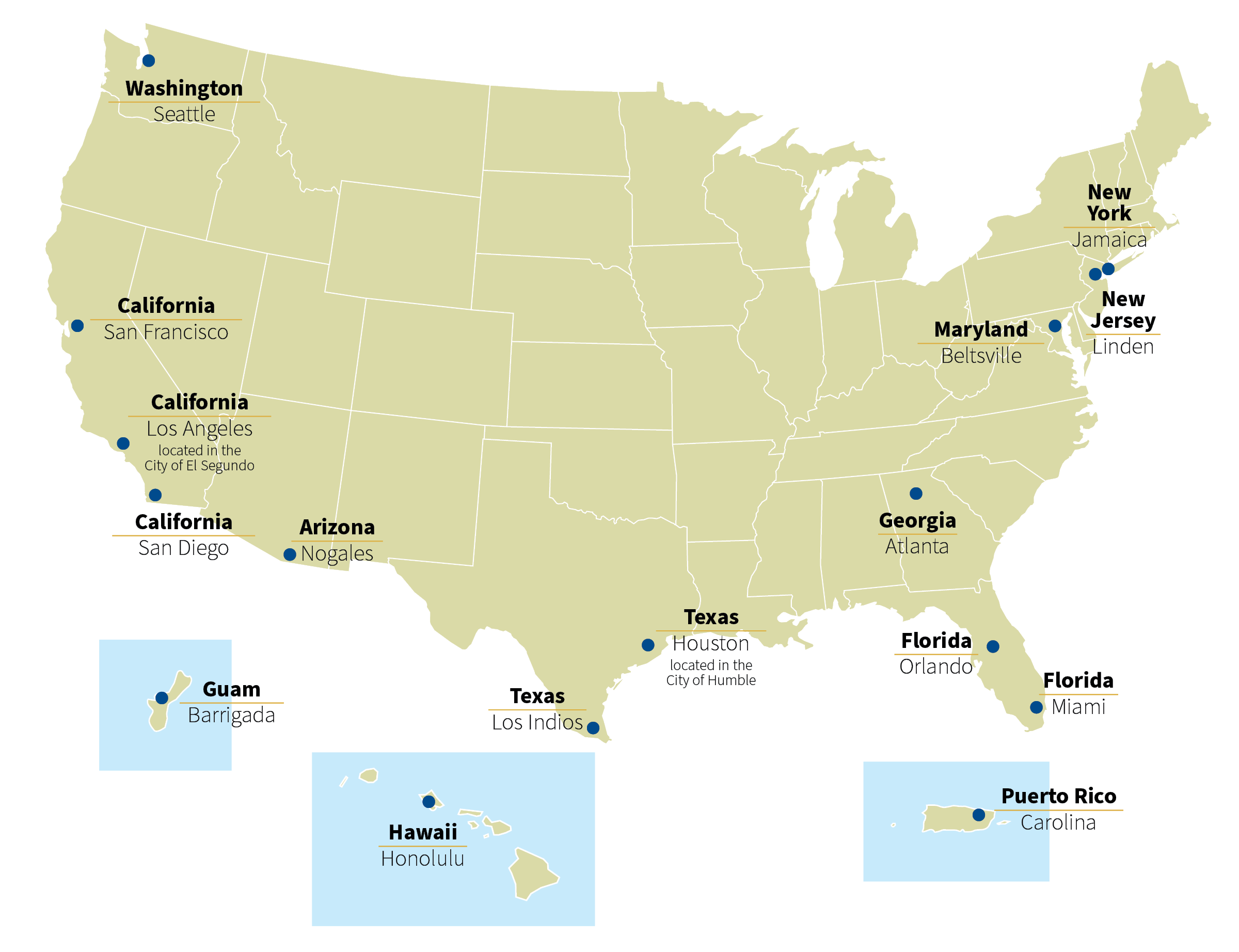Plant Inspection Stations
Experts at APHIS plant inspection stations make sure imported plants and propagative material are free of USDA-regulated pests and diseases and meet U.S. plant health import standards before the shipment is released to the importer. We also certify the health of plants, seeds, and plant products for export from the United States to another country.
Working With a Plant Inspection Station
When shipments containing live plants or propagative material arrive in the United States, U.S. Customs and Border Protection transfers those shipments to an APHIS plant inspection station. Our experts inspect shipments to confirm they are free of pests and diseases that could harm U.S. agriculture or natural resources. They also review shipment documents to make sure they comply with U.S. import requirements. Once a shipment clears a plant inspection station, it is allowed to enter the United States.
Services
- Physically inspect propagative materials, such as plants, plant cuttings, and seeds
- Identify pests intercepted during agricultural cargo inspections
- Monitor chemical and nonchemical treatments of plant material for pests and disease organisms
- Issue USDA Phytosanitary Certificates for plants, seeds, and plant products for export from the United States to attest they are free of pests and diseases
Inspection Process
Plant inspection station staff use risk-based sampling methods to focus inspections on higher-risk propagative plant material shipments and facilitate cargo inspection.
Frequently Asked Questions
You can use the Agriculture Commodity Import Requirements database to learn more about a plant's admissibility. Select the “Plants for Planting and Propagation” tile and use the filters to determine the exact commodity import requirements.
The U.S. government uses the Automated Commercial Environment (ACE) to process imports and exports. ACE streamlines import and export processes by allowing businesses to submit required data electronically. We have a number of resources to help you get started.
If you need help with filing an APHIS message set, contact the APHIS Core Message Set Help Desk at 1-833-481-2102. Select option 1 for new inquiries or option 2 for existing inquiries with a reference ticket. You can also submit questions by email to ace.itds@usda.gov.
For noncommercial shipments (for example, packages with green/yellow labels), notify the plant inspection station listed on the label no later than the time the package makes entry to the United States. The plant inspection station will specify what information they need and advise you about any inspection procedures.

When propagative material arrives at a U.S. port of entry, U.S. Customs and Border Protection forwards the shipment to an APHIS plant inspection station. There, an inspector reviews shipment documents (such as permits, phytosanitary certificates, etc.) for compliance with U.S. import requirements and visually inspects the propagative material for plant pests and diseases. If no pests or diseases are found and the documents are compliant, APHIS will release the shipment to the importer. If the inspector finds any plant pests or diseases, the plant inspection station will contact the importer or broker to review available options.
If you have questions about inspection requirements, contact your local plant inspection station using the dropdown at the bottom of this page.
When a plant inspection station receives a mail or express carrier package that contains propagative material, an inspector will review any documents (such as permits, phytosanitary certificates, etc.) that accompany the package for compliance and visually inspect the propagative material for plant pests and diseases.
Mail Packages: If no plant pests or diseases are found, the inspector will return the package to the U.S. Postal Service for delivery. If plant pests or diseases are found, the package may be refused entry.
Express Carrier Packages: Contact the express carrier with the tracking number the exporter provided you for an update.
Someone from the plant inspection station will contact you or or your broker to review the available options.
APHIS is responsible for enforcing regulations for importing and exporting plants regulated by the Convention on International Trade in Endangered Species of Wild Fauna and Flora (CITES) and the Endangered Species Act (ESA). If you are importing, exporting, or re-exporting CITES- or ESA-regulated plants and plant products, you must have a valid USDA Protected Plant Permit.
Learn More About Importing and Exporting CITES- and ESA-Protected Plants and Plant Products
Contact Us
APHIS operates 16 plant inspection stations. They are located at or near major U.S. ports of entry. Use the dropdown below to locate a plant inspection station by State or view the map.
Plant Inspection Stations
Most imported plant material intended for propagation must move through an APHIS plant inspection station to complete clearance and processing. Contact your nearest station to check the status of a shipment or notify us of a pending shipment. Our staff can also answer questions about local clearance processes.


